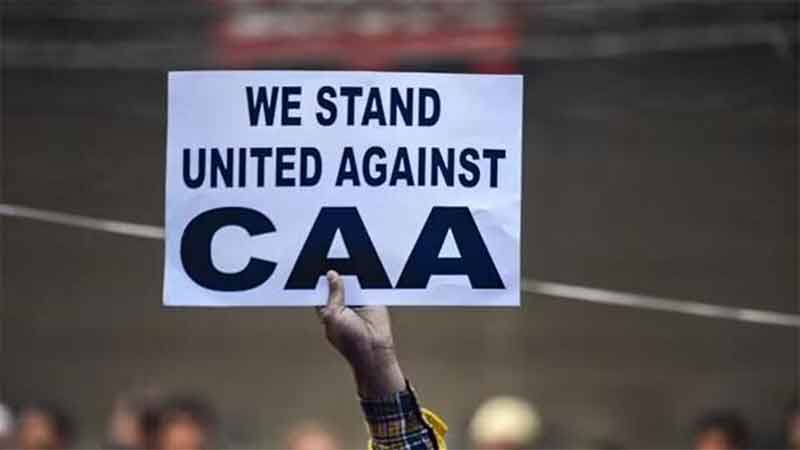
Recent reports from Bihar have pointed to the building up a movement of flood and erosion affected people of Bihar against denial of promised relief and rehabilitation. In addition longer term issues of the injustice done to people caught between embankments on two sides are also being raised. Although the emphasis of the movement just now is more on people living within embanked areas of Kosi river, people in many embanked areas experience similar problems. Those whose land has been eroded by river suffer the most ( some of them lose not just farmland but even their home) but but are denied satisfactory rehabilitation ( or even any kind of rehabilitation) in most cases.
This writer had conducted a survey in same flood prone villages of North Bihar a few years back at the peak of the winter season. The aim of this study of flood affected people was to find out to what extent they had received the benefits of relief and rehabilitation in the intervening time of about 3 months or so. What I found in one settlement after another was a very sad story of a large number of flood affected people having to face the cold wave conditions in badly damaged huts and with very little protection and food.
In recent decades whenever some of the most destructive floods have been reported, it has also been mentioned in most cases that an embankment has been breached or huge volume of water has been released from some dam. Embankments are of course built as a flood protection works but when these breach then destruction is much greater than in earlier times when the embankment did not exist. Large and medium dams are more likely to be planned as multi-purpose projects with flood-control likely to be only one of several objectives, perhaps a less important objective compared to others like hydel power generation and irrigation. If such conditions develop that very huge amount of water has to be released then again destruction is much higher than the moderate floods with which several generations of farmers had learnt to co-exist.
Floods caused by embankment breaches and large releases of dam water are certainly more flashy and destructive. Then there is the additional problem of duration of floods. Earlier floods tended to drain away rather quickly as the natural drainage paths were on the whole quite clear. Now on the one hand several kinds of construction obstruct the drainage path and on the other hand embankments have created quite a messy situation. Hence flood waters may remain in a village for several days, even weeks, disrupting the farming schedule. In addition this prolonged waterlogging leads to the spread of several diseases, sapping the strength of farmers and other villagers.
In North Bihar several heavily embanked areas have been reporting many problems due to the increase in waterlogging which emerged after the obstruction of the natural drainage by embankments. As a result of this large-scale waterlogging the productivity and diversity of farming here have come down significantly.
When we speak about the problems of farmers in flood-prone areas we are actually speaking about farmers affected by all these three conditions—floods, waterlogging and river erosion. River erosion doesn’t get much attention at the national level but in places like Malda and Murshidabad in Bengal, Bahraich, Ghazipur and Sitapur in Uttar Pradesh, in a very large part of Assam it poses a serious threat to the survival of several villages as menacing rivers tear apart or gobble huge stretches of farmland every year.
In the case of many embankments flood protection is actually provided for a few years but during this period the channelized river cannot deposit its silt over a wide area as before and so the river bed continues to rise eventually threatening to breach the embankment. The embankment can also be raised but the raised structure may be weaker. When the embankment is finally breached the resulting flood from the river flowing at a much higher level than before is extremely destructive. Of course the embankment can also breach much earlier due to poor construction, and complaints of corruption in construction and maintenance are quite common.
Secondly, there is the issue of the farmers trapped between the river and the embankment. In most cases they are not rehabilitated and hence become permanently exposed to much more difficult floods than before.
Thirdly, the water comes from catchment areas into the river is now blocked by embankments from entering the river , and hence contributes to creating large-scale waterlogging at many places. Of course partial engineering solutions ate available for such problems , but in reality these are generally not implemented efficiently and so waterlogging problem remains.
Many embankments in practice are not flood control structures but rather flood transfer structures, as quite often while one area is protected the pressure may increase elsewhere. This leads to many disputes when people of one village may cut embankment at one place to relieve the pressure of flood water on their village but this may lead to increase flood flow in another village. This can lead to violence and tension. Since the priority in official circles is often to protect the more dense and prosperous settlements, this may lead to efforts to save cities from floods even if this is at the cost of nearby villages and their farmers.
Similarly the actual experience of the operation of several dams time and again has been very different from the promise of providing protection from floods. Time and again several villages along with their farmers and crops have been devastated by water released from dams. Villagers and sometimes senior politicians and even state governments have in addition complained from time to time that they did not get advance warning.
Such examples indicate how life and livelihood of farmers over vast areas can be affected very adversely by various construction projects having far-reaching impacts over which they have no control.
In the case of large scale construction of embankments often local opinion is ignored as powerful persons including those with political connections benefit from contracts relating to the construction, repairs and maintenance of embankments year after year.
All these factors point to the need for giving much more attention to immediate relief and rehabilitation certainly, but in addition also to evolving a better approach to reducing damage from floods and erosion in a participative way, based on evidence-based approach of identifying the real causes of high and in many places increasing damage from floods. The importance of this has increased all the more in times of climate change,
Bharat Dogra is Honorary Convener, Campaign to Save Earth Now. His recent books include Planet in Peril and India’s Quest for Sustainable Farming and Healthy Food, both published by Vitasta.









































